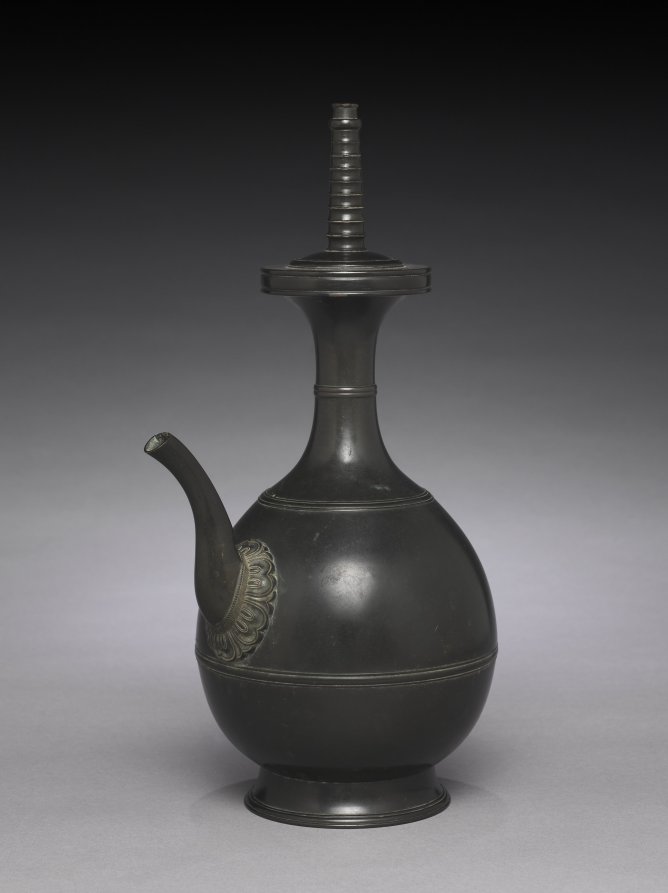| schema:description 9 | "measurements: Overall: 34.9 cm (13 3/4 in.)" |
| schema:description | "technique: bronze" |
| schema:description | "culture: Japan, late Kamakura Period (1185-1333)" |
| schema:description | "type: Metalwork" |
| schema:description | "creditline: James Parmelee Fund" |
| schema:description | "collection: Japanese Art" |
| schema:description | "tombstone: Ewer (Fusatsugata Suibyō), 1200s. Japan, late Kamakura Period (1185-1333). Bronze; overall: 34.9 cm (13 3/4 in.). The Cleveland Museum of Art, James Parmelee Fund 1970.78...(more)" |
| schema:description | "wall_description: Ewers of this particular shape developed in Japan for use in Esoteric Buddhist communities, and are called fusatsu-shaped water pitchers. Unlike the ewers commonly used in rituals celebrated before the Buddha, this type is used for the purifying of monks’ hands with water at the start of a Dharma assembly focused on the recitation of the monastic code of conduct, and repentance for transgressions....(more)" |
| schema:description | "id: 145428" |

